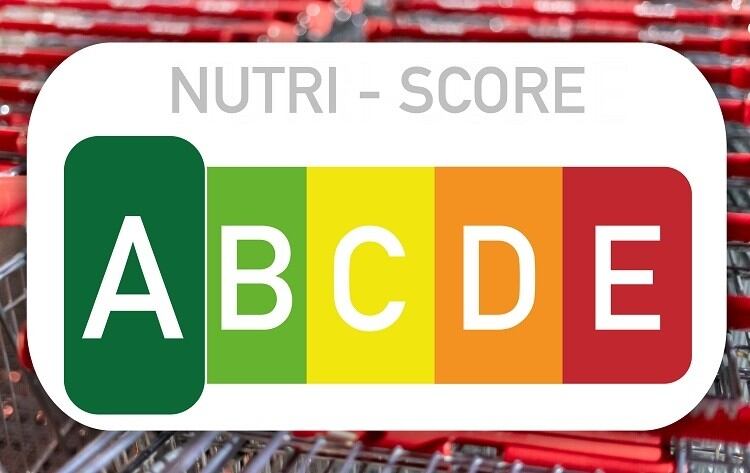The European Commission committed to adopting a front-of-pack nutritional labelling scheme as part of its Farm to Fork strategy, which aims to promote healthy and sustainable diets in the EU. The Commission plans to roll this out throughout the Single Market by the end of 2022.
As part of this process, the Commission asked EFSA, the European food safety body, to provide scientific advice on the nutrients and non-nutrient food components that are of importance for European public health. It was also asked to assess food groups with ‘important roles’ in European diets, and develop scientific criteria to guide the choice of what nutrients should be included in nutrient profiling.
Not backing any one ‘profiling model’
EFSA has opened a public consultation on the topic, asking nutritionists and other experts for input.
However, the organisation stressed that its consultation is not evaluating or proposing what profiling model should be adopted.
“We are holding a public consultation to gather scientific input from other experts, institutional partners and stakeholders on our draft scientific opinion,” Valeriu Curtui, EFSA’s nutrition head, stressed.
“We would like to remind everyone with an interest in this topic that our scientific advice aims to inform nutrient profiling modelling for front-of-pack nutrition labelling and for restricting claims on foods. This draft opinion is not, however, evaluating or proposing a particular nutrient profiling model for front-of-pack nutrition labelling.”
This is an important point because the type of system adopted is proving a controversial political topic.
The Nutri-Score system has been spear-headed by France and taken up in countries including Belgium, Germany, Spain and the Netherlands. This model takes into account both positive and negative nutrients to provide a product with an overall health ranking. It rates foods from -15 for the 'healthiest' products to +40 for those that are 'less healthy'. On the basis of this score, the product receives a letter with a corresponding colour code: from dark green (A) to dark red (F).

The score awarded a food is based on the amount of calories, sugars, saturated fat, salt, protein, fibre, fruit, vegetables, legumes and nuts in the product.
However, Nutri-Score has attracted fierce criticism from some quarters. Italy has long argued that the system unfairly discriminates against its famous food delicacies such as olive oil, Parma ham and Parmigiano cheese. The country has also questioned some of the fundamental principles underpinning the Nutri-Score calculations, arguing a single score based on total nutrient content is inadequate.
In a ‘non-paper’ submitted to the AGRIFISH EU Council last year, Italy was joined by the governments of the Czech Republic, Cyprus, Greece, Hungary, Latvia and Romania in critiquing NutriScore.
Alternate systems that could be considered include traffic light labels – which are currently used in Ireland and EU neighbour the UK. Here, rather than providing an overall ranking, individual nutrients - fat, salt and sugar - are called out and ranked red, orange or green. Italy has also submitted its own alternate system for consideration, Nutrinform.
For its part, EFSA remains neutral on the type of labelling scheme that should be adopted, FoodNavigator was told. “It’s not in EFSA’s remit to consider one model or another as those are decisions in the hands of the EU legislators.”
Nevertheless, it seems likely that EFSA’s opinion of what should – and should not – be included in nutritional communications will prove influential over the system that is eventually taken up at an EU level.
EFSA’s advice to policy makers
“Our draft opinion provides advice to policy makers about which nutrients and non-nutrient components of food to consider for inclusion in nutrient profiling models where excessive or inadequate intakes are associated with risks of long-term disease,” explained Dr Alfonso Siani, who chairs the EFSA expert working group that helped write the scientific opinion.
So, what does the draft opinion say?
Firstly, the authors suggested that, given the ‘high prevalence of overweight and obesity in Europe’, a decrease in energy intake is of public health importance for European populations.
Currently, they noted, intakes of saturated fats, sodium and added or free sugars exceed dietary recommendations in ‘most’ European populations. Eating too much of these nutrients are associated with ‘adverse health effects’, the opinion added.
And while we eat too much sat fat, salt and sugar, we aren’t eating enough dietary fibre or potassium. EFSA said that ‘intakes are inadequate’ in most European adult populations and added that this is also associated with negative health outcomes.
Other nutrients where intakes are inadequate in ‘specific sub-populations’ include: iron, calcium, vitamin D, folate and iodine. This shortcoming is usually addressed in national policies or individual advise, EFSA noted.
“Although the choice of nutrients and non-nutrients in a nutrient profiling model should be driven primarily by their public health importance, they may also be included for other reasons such as to prioritise some foods even with the science is not 100% clear that an increase in their consumption is needed for public health reasons. For example risk managers may decide to include some omega-3s in nutrient profiling models to encourage fatty fish consumption in line with their dietary recommendations, even though data on intakes of these fatty acids are insufficient to conclude whether they are consumed in inadequate amounts or not,” Dr Siani revealed.
Food groups with an ‘important role’ in the European diet
Dr Siani continued that the opinion also includes scientific considerations for food groups that ‘have an important role in European diets’.
These include starchy foods, notably potatoes and cereals; fruits and vegetables; legumes and pulses; and milk and dairy. These areas have been highlighted in national dietary guidelines in Member States.

“National guidelines encourage consumption of whole grains, fruits and vegetables, nuts and sees, fat-reduced milk and dairy products, fish and water. But food products high in saturated fats, sugars and/or sodium owning to food processing are generally discouraged, even within these food categories,” Dr Siani said.
“They also promote regular consumption of legumes and pulses instead of meat (particularly red meat and processed meat), and vegetable oils rich in monounsaturated and polyunsaturated fats instead of those high in saturated fats,” the nutrition expert continued.
The public consultation is open until 9 January. EFSA will then finalise its scientific opinion in ‘early 2022’.




